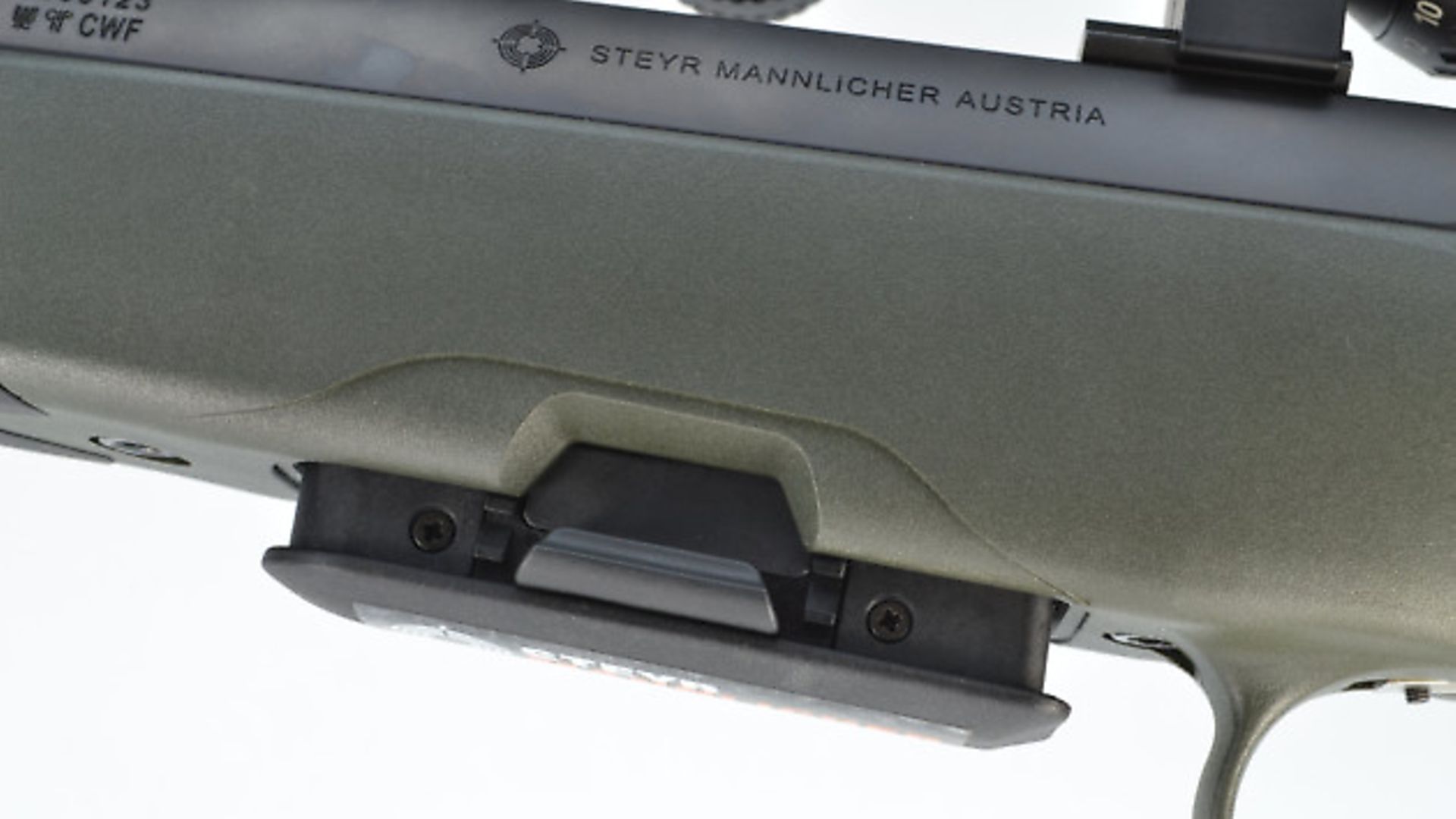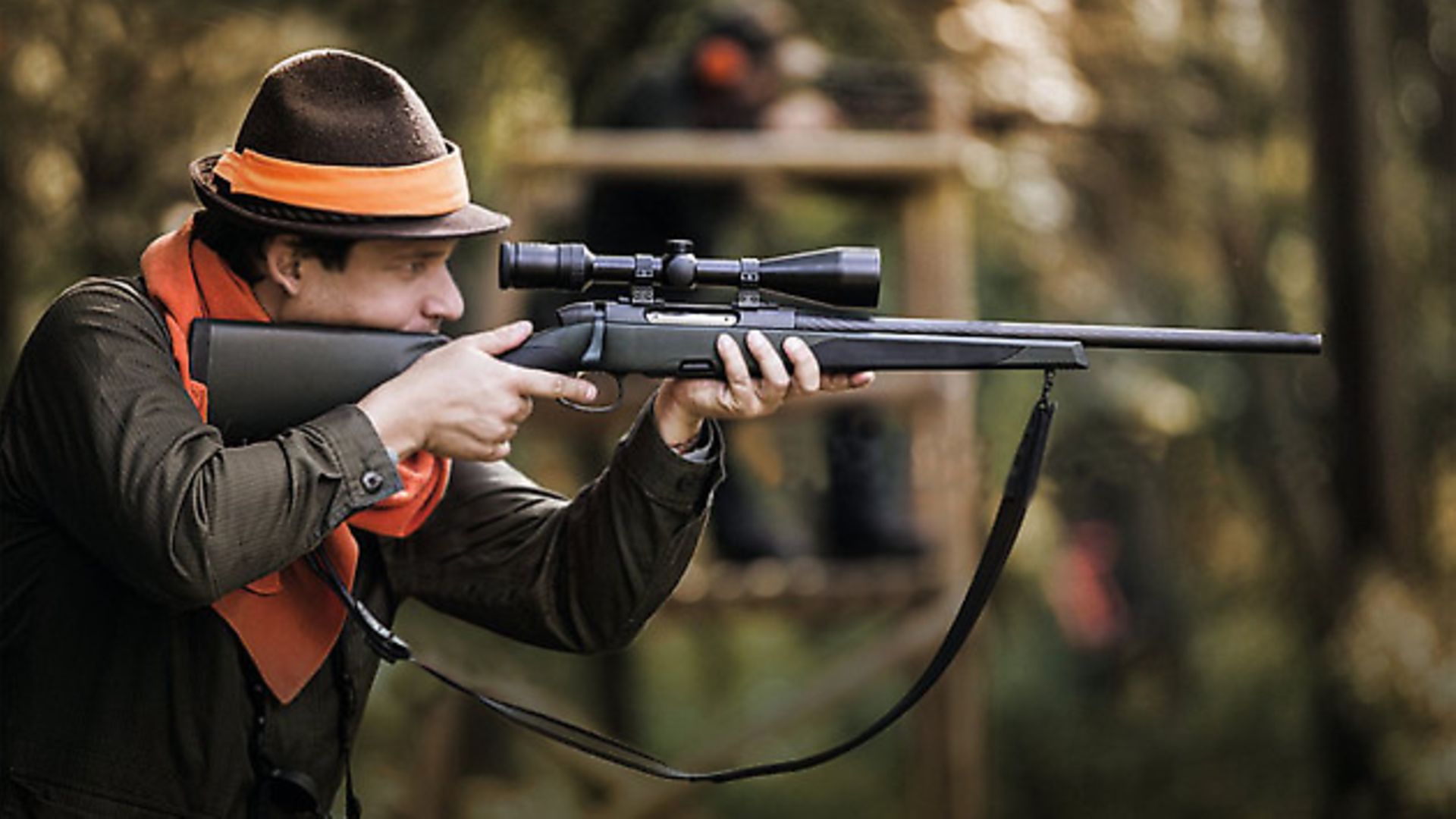Chris Parkin presents this review on the Steyr Mannlicher CLII SX Mountain .308 Win rifle
 credit: Archant
credit: Archant
Pros
A very well made rifle with superb machining qualities
Delightfully charismatic external swirl on the barrel
Homogenous good looks
 credit: Archant
credit: Archant
Cons
Pointless Set trigger
Strange muzzle thread given European origins?
A bit more meat to hold onto in the forend would be nice
Opinion
The Steyr did everything it was asked to do and seems very well-made for the price, but it had a strangely dead feel to it when shot; it didn’t seem to recoil hard but was lively in the forend and would benefit from a moderator.
 credit: Archant
credit: Archant
Model: Steyr Mannlicher CLII SX Mountain
Calibre: 308 Winchester (243/6.5x55/270/7-08/7x64/30-06/8x57/9.3x62 also available)
Magazine Capacity: 5+1 round detachable magazine
Barrel: 508mm/20” Hammer forged screwcut ½” UNF
Length: 1060mm/41.75”
Weight: 3.3kg/7 ¼ lbs
Length of pull: 349.25mm/13 3/4”
Trigger pull: Single set
 credit: Archant
credit: Archant
Price
£1120.99
Contact
www.sportsmanguncentre.co.uk
01392 354854
 credit: Archant
credit: Archant
IN DEPTH
Steyr Mannlicher is hardly a name that needs much introduction, and the rifles they produce are some of the most attractive around; they show the beautiful spiral external profile of the hammer-forging process loud and proud, as well as characteristic features that aren’t found on any other bolt-action sporting rifles. The Mountain is a mid-weight rifle, and for everyday stalking duties it is perfectly specified, with a ½” screw-cut muzzle for a sound moderator on the 20” .308 Win barrel, which will handle anything this country can throw at you and a lot more internationally.
Starting out at 17mm in diameter, the barrel swells gracefully out to where it meets the action, which has a non-cylindrical profile, flat-topped with four threaded holes for scope mounting bases. No open sights are fitted to the rifle, but it features a polymer detachable magazine holding five rounds, plus an extra in the chamber if you feel the need. The mag must be removed to load it as, although it can be top-fed, the ejection port is minimal to the side, retaining the most metal to keep the action stiff. Twin catches in front of the trigger guard allow it to drop out into the palm of your hand, although being polymer on polymer (of the stock), it was a touch sticky to withdraw initially. The trigger guard shows plenty of space and, within it, a single ‘set’ trigger lurks, of which I am no fan. I like to put my finger on a trigger, and although I like two to three pounds on a sporter, I can happily shoot up to five pounds, if needed. Well, the Steyr’s trigger broke fairly well around three and a half pounds, with a tiny amount of creep, but nothing to cause any problems, and a smooth feel. Pushing it forward onto single ‘set’ mode was a bit vague, as it would break at the slightest touch of your finger; you couldn’t even feel that it was touching if your hands were cold and gloved. I never even managed to get my scales to record it, it was that light, and I, for one, would never ever use it.
Steyr retains a very charismatic spoon handle bolt, which opens the two pairs of lugs to cycle the action. In typically Austrian style, the machining and design quality of all internal and external components is faultless, and the bolt is no different, its push feed design working flawlessly in all operations with claw extractor and plunger ejector sending brass well clear. Primary extraction was good, but I did find the physical shape of the handle to be a little slower and harder to access when shooting rapidly. Its angled edges just aren’t as comfortable as a spherical ball. The safety catch rolls on the rifle’s tang with an extra pop-up locator, that needs to be pressed in to click forward for fire. It also acts as the bolt removal catch and, when set to safe with the bolt locked, the bolt handle can actually be clicked further down and closer to the side walls of the stock – although, other than carrying, I’m not sure there’s great need for this. I’d trade both design and function for a better bolt knob/handle.
The stock is made from a synthetic polymer and shows a new design that is far improved compared to the Steyrs of old, which were fa bit on the floppy side. A full aluminium bedding block sits within to mate with the rifle’s underside, and all is perfectly designed with fine-quality machining to accept the action’s profile, and recoil lug to seamlessly transfer generated recoil. It has a rectangular section fore-end that free floats the barrel and, fitted with a stud, will happily shoot off a bipod. Shooting from twin sticks seemed to be the real weak spot of the old models, where the inability to move the sticks’ feet in the field might have tempted some shooters to really twist the gun. It was a little alarming to see how much this could distort a rifle’s fore-end. The slim profile is a little on the small side for big hands, but inlaid soft rubberised panels aid better purchase, both here and on the ‘grip’, which is generous in size and well positioned for good trigger operation. A slight right-handed palm swell improves the tactile feel further. The underside shows cut-outs for the magazine latches and, with a dull green colour highlighted by the black panels, is very appealing to the eye. It shows a textured surface that doesn’t shine, but the walls of the moulding may well be quite thin, as you do get a distinct hollow feel when it bumps against anything. It did feel very dead to shoot, as it dampened out recoil and consequent noise at this stage. The comb is well-shaped and comfortable to shoot from, but at 13¾” is a little short in length of pull for my preferences, but by no means does it feel small. Everything is finished off by a nice ¾” rubber pad, which grips the shoulder pocket well and distributes recoil forces evenly across its surface.
I shot the gun with the usual suspects ammunition-wise, from Hornady, Norma, Lapua and PPU, the first two of which it seemed to prefer in the 150-165gr weight zone. The trigger was good to use, but on ‘set’ mode it was horrible, to be honest. All bolt and action operations were executed with zero fuss, and a few tight cases from the PPU seemed to give the bolt no great trouble when extracting them. I also shot some hand-loads through it with Sierra/Ramshot recipes and, like nearly every .308 in existence, it is very unlikely to miss any deer in action. Firing pin strikes were solid and, mechanically speaking, the gun is just very sturdy. It was very defined in operation, yet a little lifeless, as the dampening stock seemed to deaden the feel of the gun a little too much in terms of recoil; however, it seemed to remain a little flighty in the front end and, when prone, easily lifted off and away from the target. Shot standing or kneeling, I would have liked a little more ‘meat’ in the fore-end to hold onto, without my fingers or thumb contacting the barrel (and that is without gloves on). It just needed a little more chunk in the fore-end, sadly. The balance was just a little too rearward, but perhaps this is to accommodate and balance well with a sound moderator, which would have cured all these ills and is more than likely, these days, to be specified alongside the gun.
The flat sides of the gun helped to make it comfortable to sling and carry, where it seemed to remain located in position better, and these days a moderator would have been a very welcome addition to such a compact .308. It is interesting to note that the barrel thread was imperial, and not a 14 or 15x1 metric, as would be expected on a European rifle. The thread cutting showed the hallmarks of non-CNC machining where tool feed rates are slower, and I did see a few sharp edges where a little chatter may have intruded, but this is nitpicking.
 credit: Archant
credit: Archant
 credit: Archant
credit: Archant
 credit: Archant
credit: Archant
 credit: Archant
credit: Archant
 credit: Archant
credit: Archant
 credit: Archant
credit: Archant
 credit: Archant
credit: Archant
 credit: Archant
credit: Archant
 credit: Archant
credit: Archant
 credit: Archant
credit: Archant
 credit: Archant
credit: Archant
 credit: Archant
credit: Archant